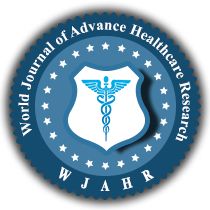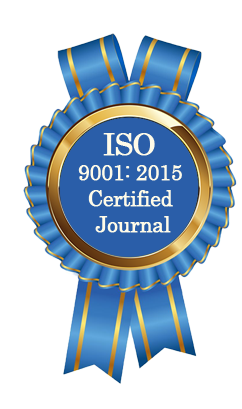| All | Since 2020 | |
| Citation | 105 | 60 |
| h-index | 4 | 4 |
| i10-index | 3 | 2 |
WJAHR Citation 
Login
News & Updation
Best Article Awards
World Journal of Advance Healthcare Research (WJAHR) is giving Best Article Award in every Issue for Best Article and Issue Certificate of Appreciation to the Authors to promote research activity of scholar.
Best Article of current issue
Download Article : Click here
Indexing
Abstract
COMPARATIVE EVALUATION OF CITRIC ACID IMPACT ON RETENTION STRENGTH OF CAD/CAM INDIRECT RESTORATIVE MATERIALS: A CRITICAL IN VITRO INVESTIGATION
Farah Abdulhaq Ismail* and Maha Anwar Hussein
ABSTRACT
Background: The ongoing advancements in all-ceramic and hybrid restorative materials have fundamentally transformed aesthetic dentistry, yet their long-term clinical success remains intricately linked to their chemical resilience under challenging intraoral conditions. Among these, frequent exposure to acidic dietary components such as citric acid poses a significant threat to the integrity and retention of indirect restorations. Objective: This study aimed to critically evaluate the effect of citric acid immersion on the retention strength of three recently introduced CAD/CAM indirect restorative materials: lithium disilicate (IPS E.max CAD), zirconia-reinforced lithium silicate (VITA Suprinity), and resin nano-ceramic (Cerasmart). Materials and Methods: Thirty sound maxillary first premolars were extracted and randomly allocated into three equal groups (n = 10), each corresponding to one of the tested materials. Each group was further subdivided, with half immersed in artificial saliva (control) and the other half in a 2% citric acid solution (pH 3.20) at 37 °C for seven days. Following thermocycling, crowns were adhesively cemented using dual-cure resin cement, and retention strength was evaluated via pull-off testing. Failure modes were assessed microscopically, while statistical significance was determined using Mann–Whitney and Kruskal–Wallis tests (p ≤ 0.01). Results: All groups exhibited a significant increase in retention strength following citric acid immersion (p ≤ 0.01). The resin nano-ceramic group demonstrated the highest retention mean value (149 ± 5.96 N), followed by zirconia-reinforced lithium silicate (88.56 ± 7.48 N), and lithium disilicate (81 ± 4.95 N). Moreover, failure mode analysis revealed that the resin group primarily exhibited mixed failures, which underscores its superior adhesive properties and cohesive integrity, compared to the lithium disilicate group that showed higher occurrences of adhesive failures, indicative of potential surface deterioration and compromised bonding effectiveness. In summary; The results emphasize the impact of acid, on how well CAD/CAM materials hold up over time; emphasizing the strong chemical durability and adhesive strength of resin nano ceramics. The observations support the idea of choosing materials based on patient needs and dietary considerations to improve the long term success of restorations.
[Full Text Article] [Download Certificate]
